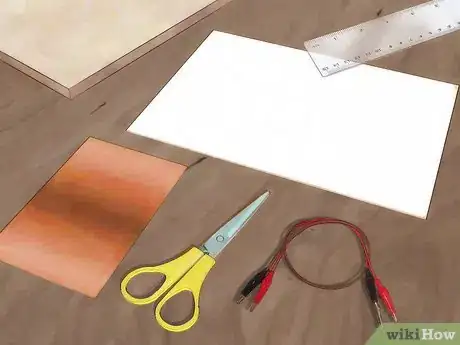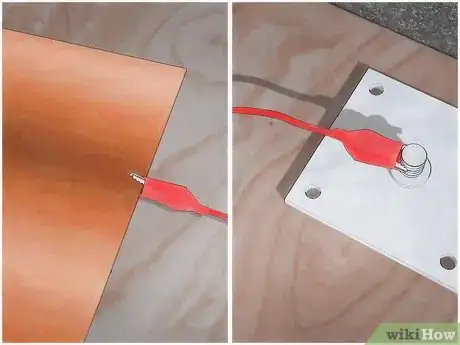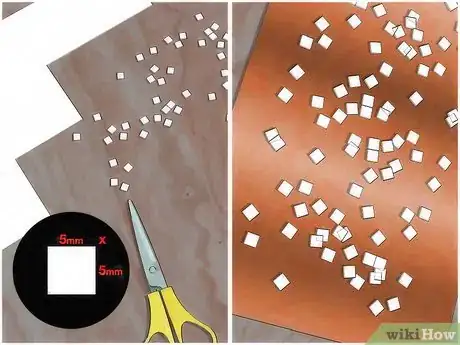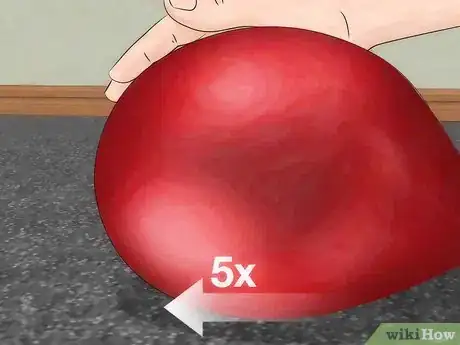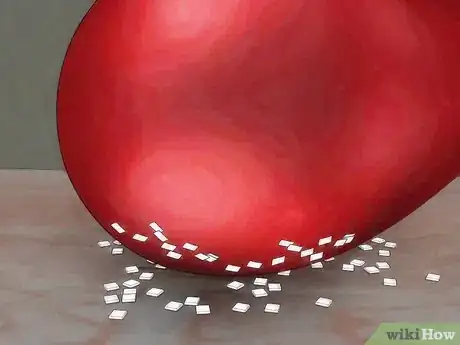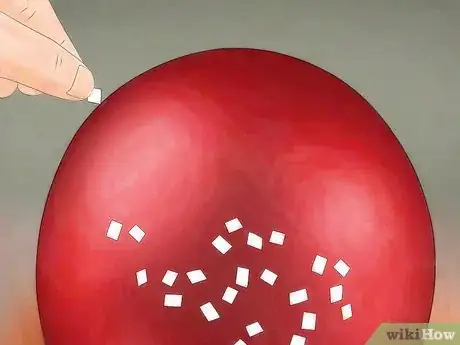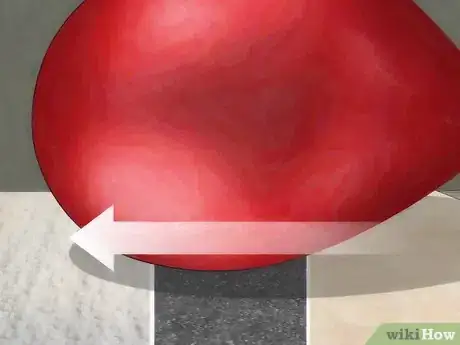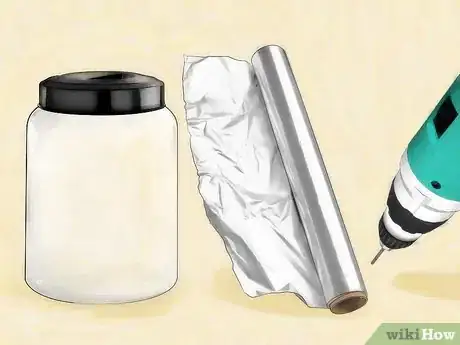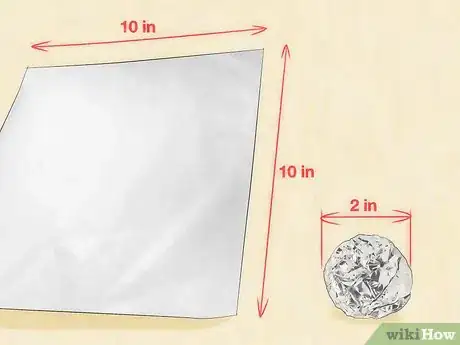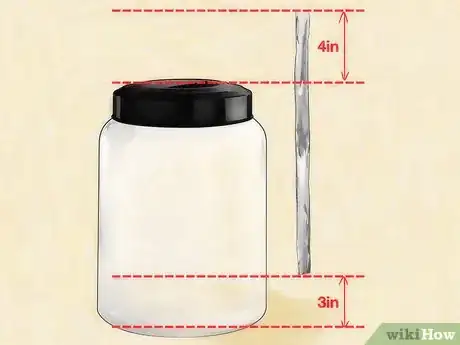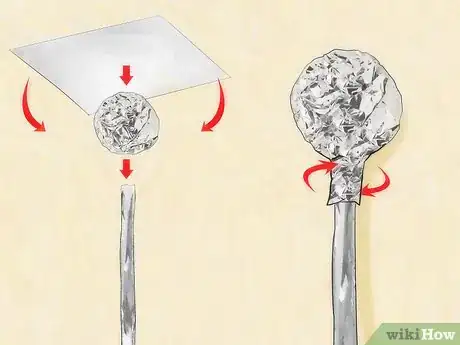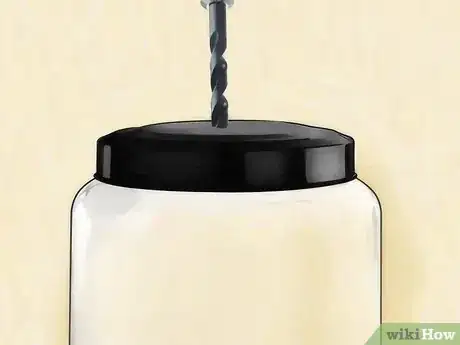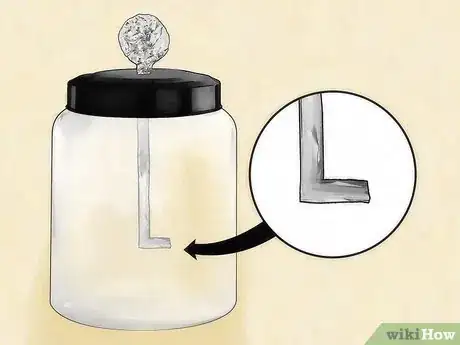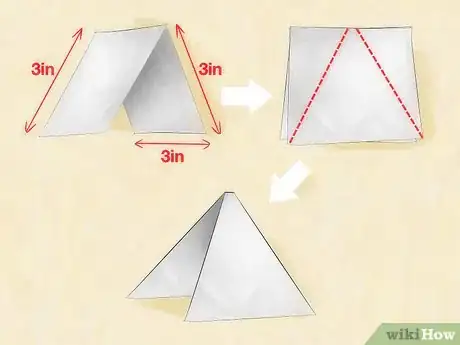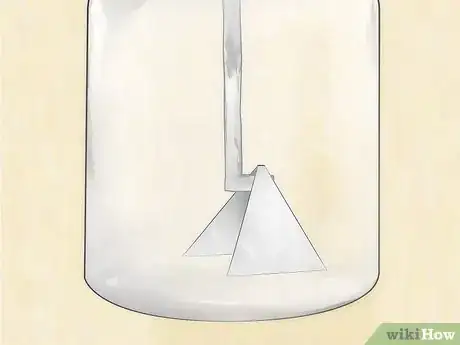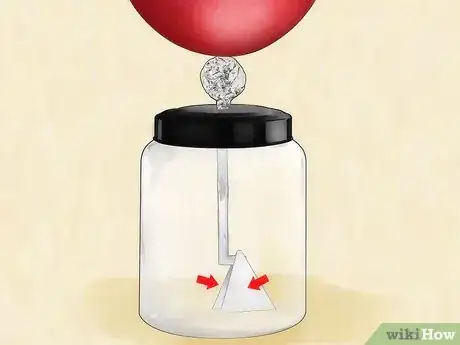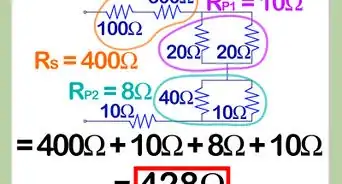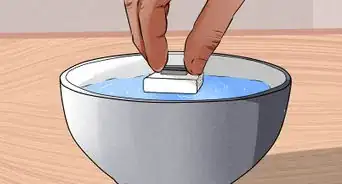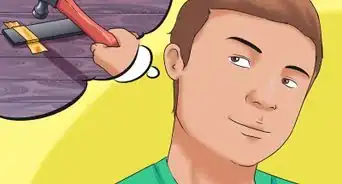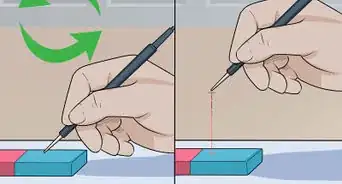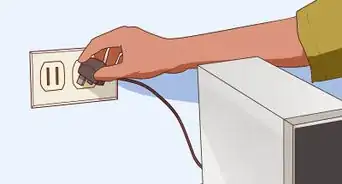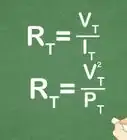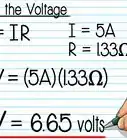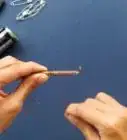This article was co-authored by wikiHow Staff. Our trained team of editors and researchers validate articles for accuracy and comprehensiveness. wikiHow's Content Management Team carefully monitors the work from our editorial staff to ensure that each article is backed by trusted research and meets our high quality standards.
This article has been viewed 86,042 times.
Learn more...
Static electricity is the imbalance of negative and positive charges on an object's surface.[1] It can be easily visible, such as when a spark is seen after touching a metal doorknob. However, physically measuring static electricity is a much more involved process. When you learn how to measure static electricity, you are basically measuring the surface of a particular object.
Steps
Measuring the Static Charge of Different Materials
-
1Gather your materials. For this experiment you will need a small copper plate, a ground connection, jumper wires with alligator clips, white paper, scissors, a ruler, a balloon, hair, a cotton t-shirt, a polyester t-shirt, carpet, and a ceramic tile. This experiment will test the relative amount of static electricity in an object.[2]
- A small copper sheet plate can be purchased relatively cheaply online or at a hardware store.
- The ground connection and alligator clip jumper wire will need to be purchased at a hardware or electronics store.
-
2Attach the copper plate to the ground connection with the jumper wire. Take one end of the alligator clip and attach it to the ground connection. Attach the other alligator clip to the copper plate. It doesn’t matter where the clip is placed, just so that it is connected to the grounding wire.
- Touching an object to the plate removes any residual static electricity an object may have.
Advertisement -
3Cut the sheet of paper into 100 square pieces 5 mm x 5 mm. Using a ruler, measure out 5 millimeter by 5 millimeter squares and cut them out. Try to cut them as close to identical in size as possible. This process will be more accurate and go faster if you have access to a paper cutter.
- Remove any lingering static electricity in the paper by placing them on the copper plate.
- After removing any residual static, put the pieces of paper onto a flat tray for the remainder of the experiment.
-
4Inflate the balloon. Blow up the balloon to a medium-to-large size. The size is not important as long as you use the same balloon for every material. If you pop the balloon during one of the tests, you will need to blow up a new balloon and start at the beginning to maintain consistency during the experiment.
- Discharge the balloon of any lingering static electricity by rolling it across the copper plate.
-
5Rub the balloon 5 times across the surface of a material. First, choose the material you want to measure the static charge. Some good materials to test are hair, carpet, a cotton t-shirt, a polyester t-shirt, and a ceramic tile.[3]
- Rub the balloon in the same direction each time across the surface of the material.
-
6Place the balloon on the cut pieces of paper. As the balloon is rubbed across the surfaces, it will be charged with varying amounts of static electricity. When you place the balloon in the paper, the pieces will stick based on the amount of static electricity the balloon holds.
- Avoid rolling the balloon around the pile of paper, just set it on top and see how many pieces stick.
-
7Count and record the number of paper pieces stuck to the balloon. Peel the pieces of paper off the balloon and count them as you do. Different materials will lead to more or fewer pieces sticking. Repeat the procedure with the various different materials to see how they differ.
- Be sure to discharge the paper and the balloon before beginning again.
-
8Compare the results of the different materials. Look at the information you have recorded and compare how many pieces of paper stick to the balloon after being rubbed across the various materials. When more pieces of paper stick to the balloon, it indicates that the material has a higher static charge.
- Look at the list and see which materials caused the balloon to attract the most paper. Hair has a lot of static electricity and will likely have led to the most paper pieces sticking.
- Although this method does not tell you the exact amount of static electricity an object has, it does allow you to see the relative amounts of static electricity the material contains.
Measuring with a Homemade Electroscope
-
1Gather your materials. An electroscope is a device that can detect static electricity by using thin metal pieces that separate in the presence of an electrical charge.[4] You can build a very simple electroscope using a few simple household items. You’ll need a glass jar with a plastic lid, aluminum foil, and a drill.
-
2Make a ball of foil. Cut off a sheet of aluminum foil about 10 inches by 10 inches. The exact dimensions of the piece of foil are not important. Crumple the sheet of foil into a sphere.[5] Try to keep the ball as round as possible.
- The size of the ball should be about 2 inches in diameter. Again, exact dimensions are not important, but you don’t want the ball to be too big or too small.
-
3Twist together an aluminum foil rod. Take another sheet of foil and twist it into a rod shape that is a little bit less than the length of your jar. You want the aluminum rod to be about 3 inches above the bottom of the jar and stick out about 4 inches above the top of the jar.
-
4Attach the ball to the rod by wrapping foil around both and twisting together. Using another sheet of foil, place the ball and the rod together and wrap the larger sheet around both pieces. Twist the foil around the rod to secure everything tightly in place.
-
5Drill a hole in the plastic lid of the jar. Using a drill, make a hole in the center of lid that is big enough for the foil rod to slide through. If you do not have a drill on hand, you can use a hammer and a nail to punch a hole through the lid.[6]
- Use caution with the drill or hammer. Adult supervision is recommended.
-
6Secure the foil rod/sphere to the lid. Slide the foil rod through the hole in the lid with the foil sphere sticking out of the top end of the lid. Tape the rod in place from the bottom and the top. A half inch from the bottom of the rod, make a 90° (right angle) bend.
-
7Cut out a triangle shape from folded foil. Cut out a piece of foil that is around 6 inches by 3 inches. Fold the foil length-wise so that it is now a 3 in by 3 in square. Cut out a triangle shape, with the point of the triangle almost reaching the folded age. Leave the triangles attached at the point by not cutting all the way to the fold.[7] When you are finished cutting you should have two triangles connected by a little bit of foil at the top.
- If you cut through the fold, cut a new piece of foil and start again.
-
8Hang the foil triangles on the bend of the rod. Drape the foil triangles over the rod so that they hang almost touching each other. Screw the lid onto the jar, being careful not to knock the foil triangles off the rod as you do. Keep the electroscope upright.
- If the triangles do fall off, simply unscrew the lid and reposition them.
-
9Observe your device in action. Rub a balloon against your hair and place it near the sphere at the top of your electroscope. You should see the triangles move apart from each other. As the device comes in contact with static electricity, the two triangles will have the same charges and will move apart from each other. When there is no static electricity, the triangles will sit close to each other.[8]
- Wander around your home placing the sphere near different objects to see how charged they are.
References
- ↑ https://www.loc.gov/everyday-mysteries/physics/item/how-does-static-electricity-work/
- ↑ https://www.loc.gov/everyday-mysteries/physics/item/how-does-static-electricity-work/
- ↑ https://www.loc.gov/everyday-mysteries/physics/item/how-does-static-electricity-work/
- ↑ https://www.sciencebuddies.org/stem-activities/electroscope
- ↑ https://www.youtube.com/watch?v=NrsedySS1mE
- ↑ https://www.sciencebuddies.org/stem-activities/electroscope
- ↑ https://www.sciencebuddies.org/stem-activities/electroscope
- ↑ https://www.sciencebuddies.org/stem-activities/electroscope
